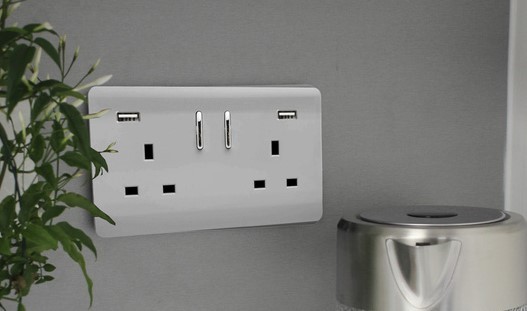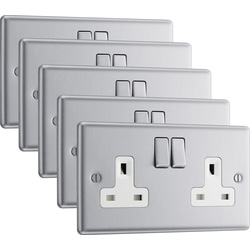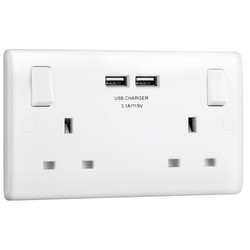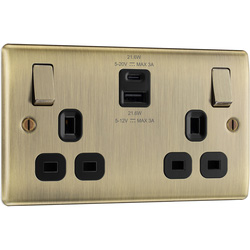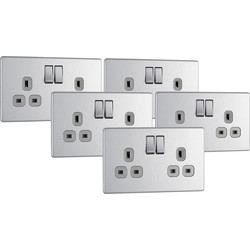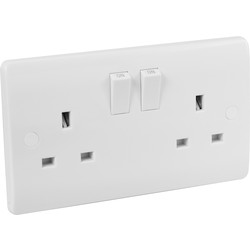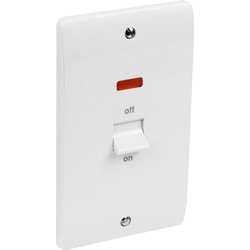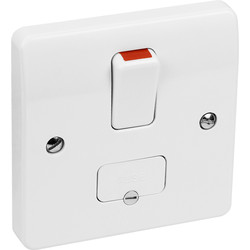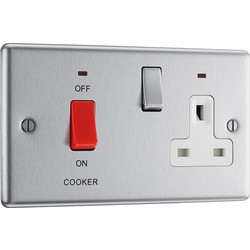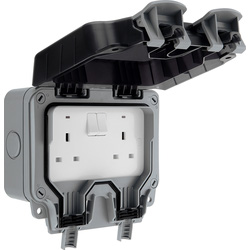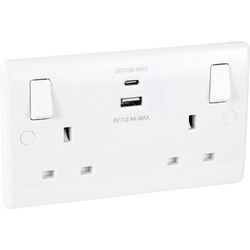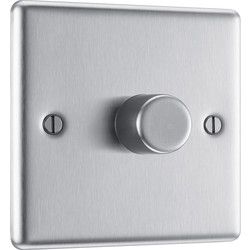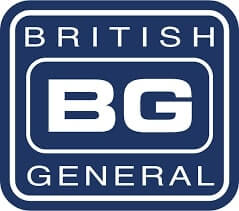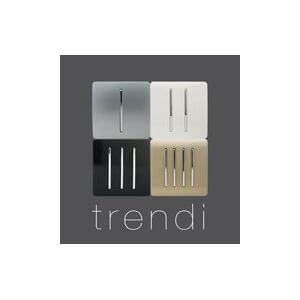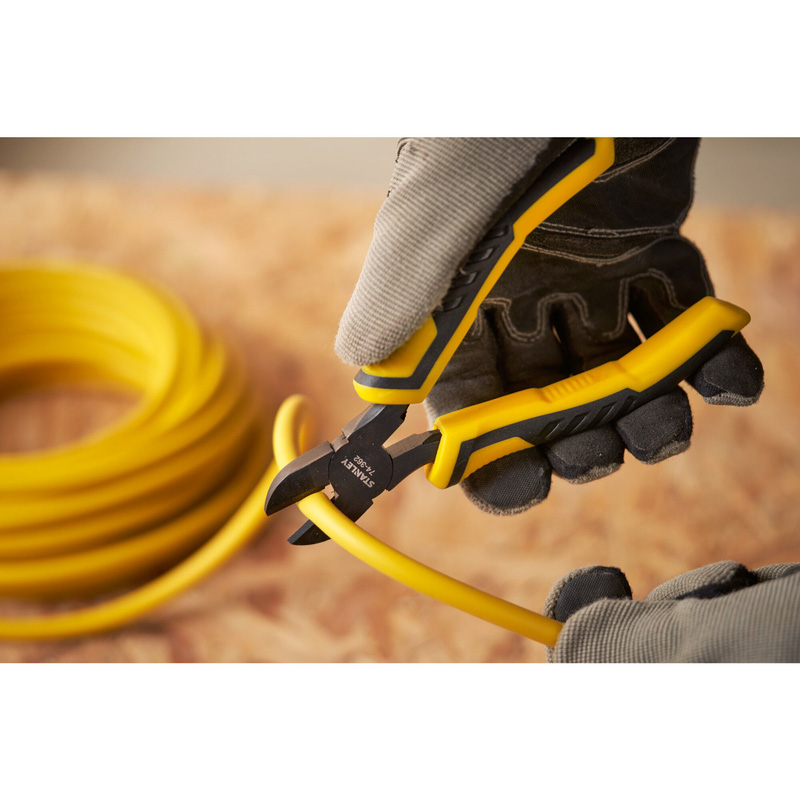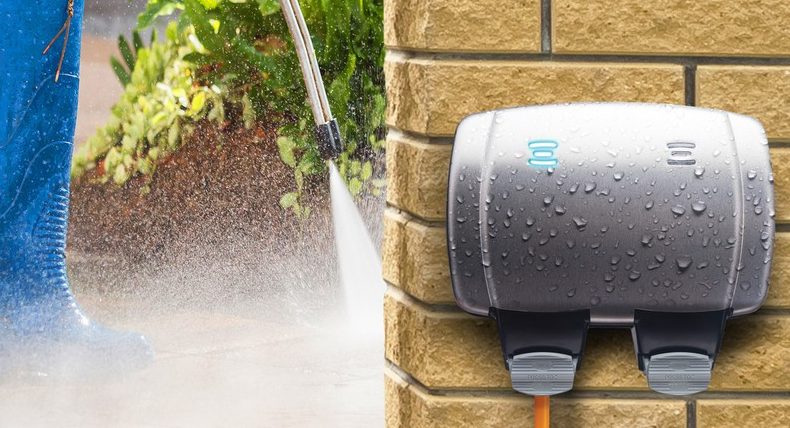Beyond plugging your devices and appliances in, you probably don’t take much time to think about plug sockets. But choosing the right one can stop you getting frustrated over limited plug access, complement the style of a room, and keep you safe.
Most plug sockets feature switches, so you can manually turn the power on and off. You’ll want to consider the number of ‘gangs’ the unit has – also more simply known as the number of sockets it has for plugs. The majority of sockets are 1 or 2 gang plug sockets.
These days, sockets can do more than provide power to basic appliances – modern sockets come with USB or micro USB ports for charging devices, can boost your WiFi to weak spots using a WPS connection, and smart sockets can be controlled using your smartphone, tablet, or home assistant. For industrial settings or older circuits, RCD sockets can add an additional safety feature to protect you and your circuits from faults.
Types of Plug Sockets
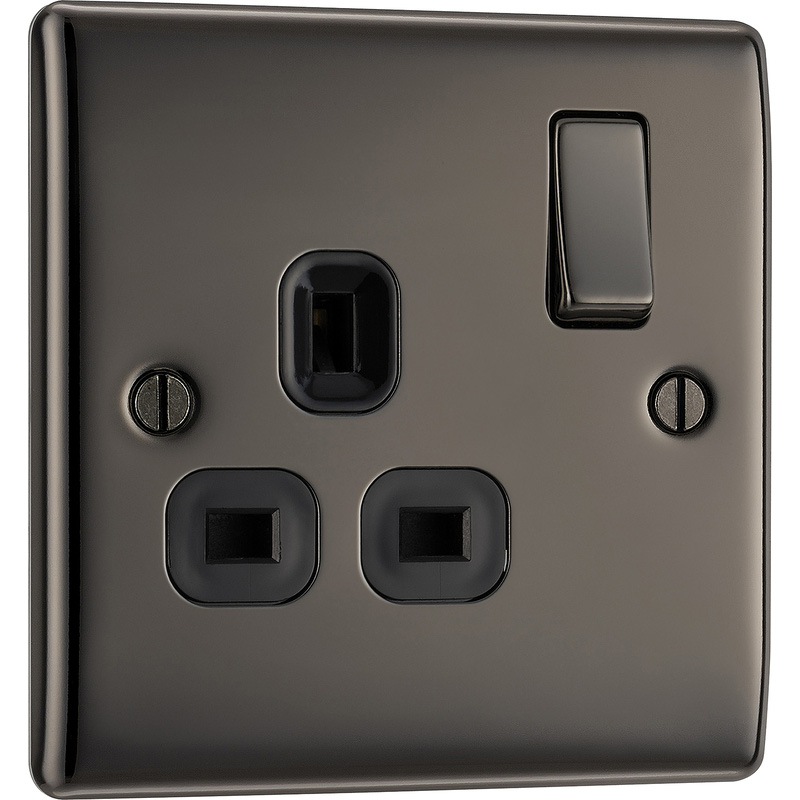
Single Switched Sockets
A single switch plug socket, also known as a 1 gang plug socket, is one of the simplest and most common options in the UK. There is a slot for a plug, and a switch to turn the power supply on and off. There are a range of colours and subtle style differences depending on your preferences. Single switched sockets can be used in domestic, commercial and industrial environments.

Double Switched Sockets
Double switch plug sockets, also known as 2 gang sockets, have two slots for two plugs and two switches to turn the power supply to each one on and off. Like single switched sockets, they come in a range of colours and styles to suit your space and are commonly used in a number of settings including domestic, commercial and industrial environments.

Smart Switched Sockets
Smart switched sockets are similar to 1 and 2 gang sockets, but connect to your WiFi so they can be controlled by your smartphone, tablet or using voice control when connected to a smart home assistant. They can also be turned on and off manually if you need to. They’re ideal if you’re away from home and forget to turn something off, and for saving energy by not leaving things on standby.
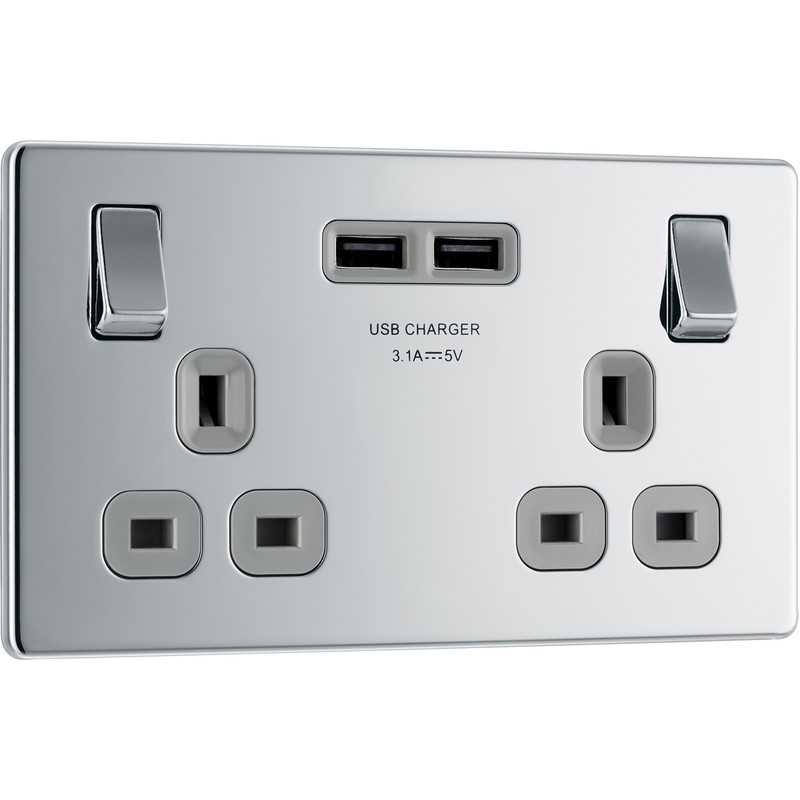
USB Switched Sockets
USB switched sockets have one or two standard three-pronged slots, as well as USB and/or micro USB sockets. The switch just powers the regular socket so the USB always has a small level of power. They’re ideal for office buildings and domestic environments so you can keep your technology charged without using up precious plug socket space.
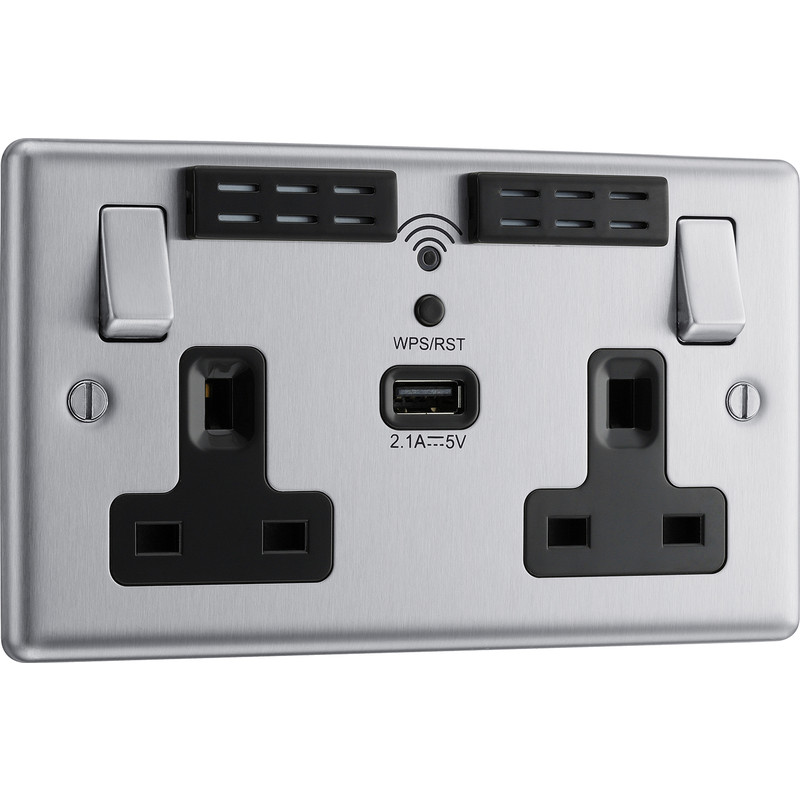
WiFi Extender Switched Sockets
WiFi extender switched sockets look like double or single switched sockets, but also use a WPS connection to connect to your router so your internet connection can be boosted to any weak spots in the home. Many WiFI extender switched sockets also come with USB ports, so they’re perfect for home offices or small businesses that need a flexible and versatile plug socket.
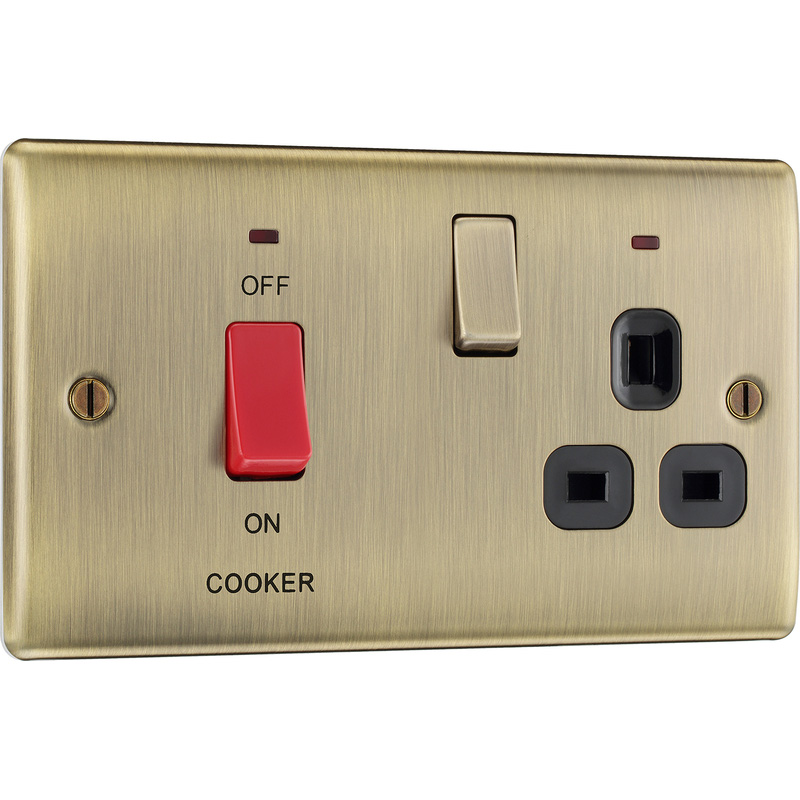
Cooker Unit Plug Socket
A cooker unit switched socket has a cooker switch and a cooker socket, which can act as an isolator and make your kitchen wiring safer and easier to maintain. As the name suggests, they are used in the kitchen to provide power to an oven. Some cooker unit switched sockets have neon lights that can tell you whether the cooker is powered. Cooker unit switches are mainly used in the home, but can also be found in small businesses.
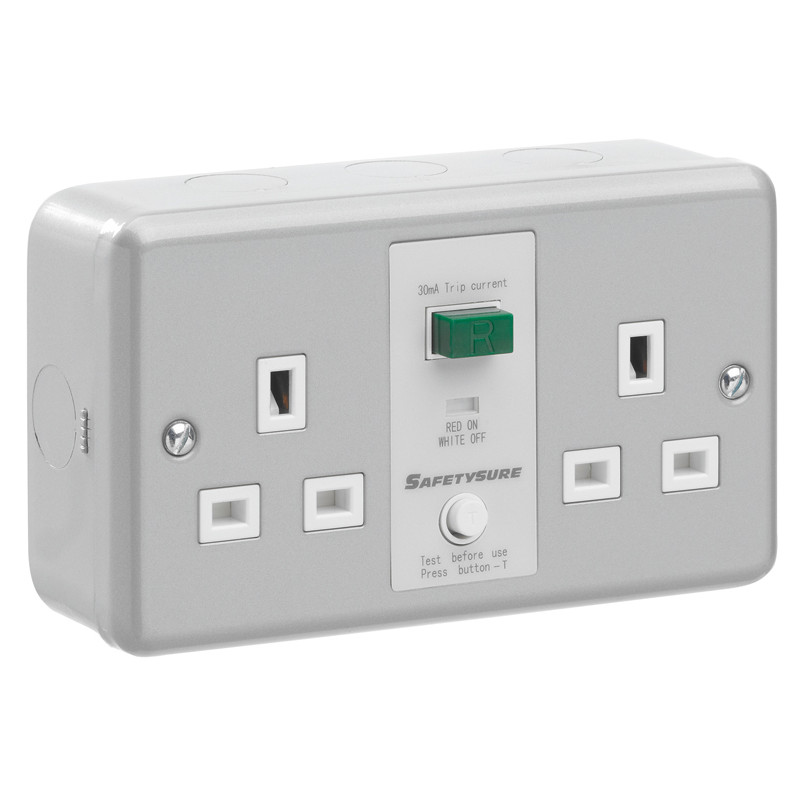
RCD Switch Plug Socket
RCD switched sockets have a built in Residual Current Device which trips and stops the power supply if there is a fault detected in the circuit. They can be controlled manually using the switch, just like a normal switched socket. Since 2015, all circuits require protection using circuit breakers, so these are less commonly used, but can often be found in industrial settings for additional protection. They can also be used on old but still compliant circuits that aren’t protected by an RCD in a fuse box or distribution unit.
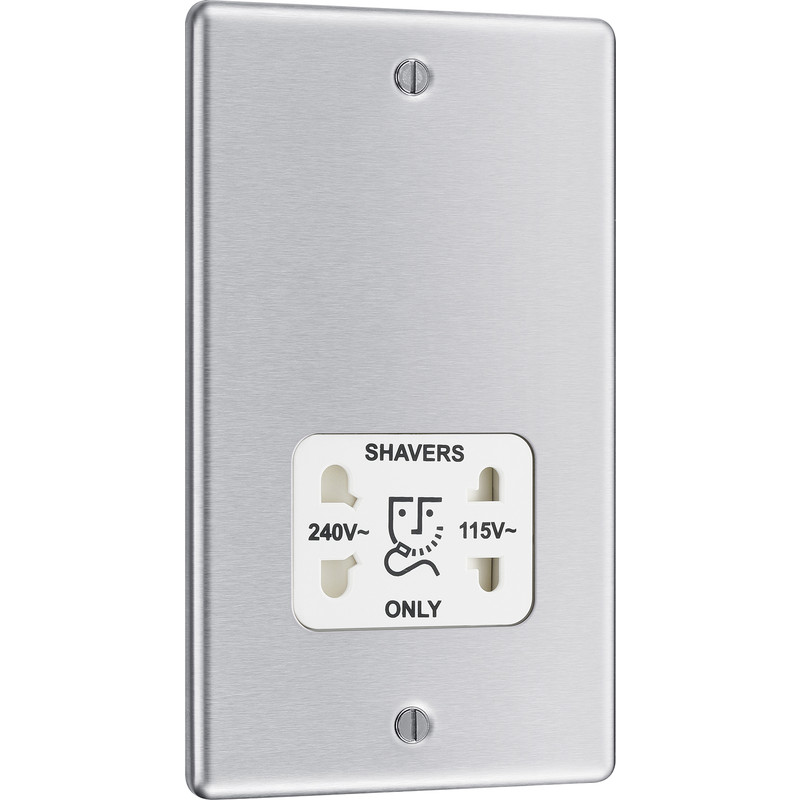
Shaver Sockets
A shaver socket, also known as a shaver point, is used in bathrooms to power or recharge electric shavers and toothbrushes. Many shaver points have two sockets so you can plug your appliance into the 115v or the 230v slot, depending on your shaver or toothbrush – this is because visitors from other countries may have 115V appliances, while we use 230V in the UK. They are not switched, so they provide instant power when plugged in. Shaver sockets are commonly used in household bathrooms or hotel rooms.
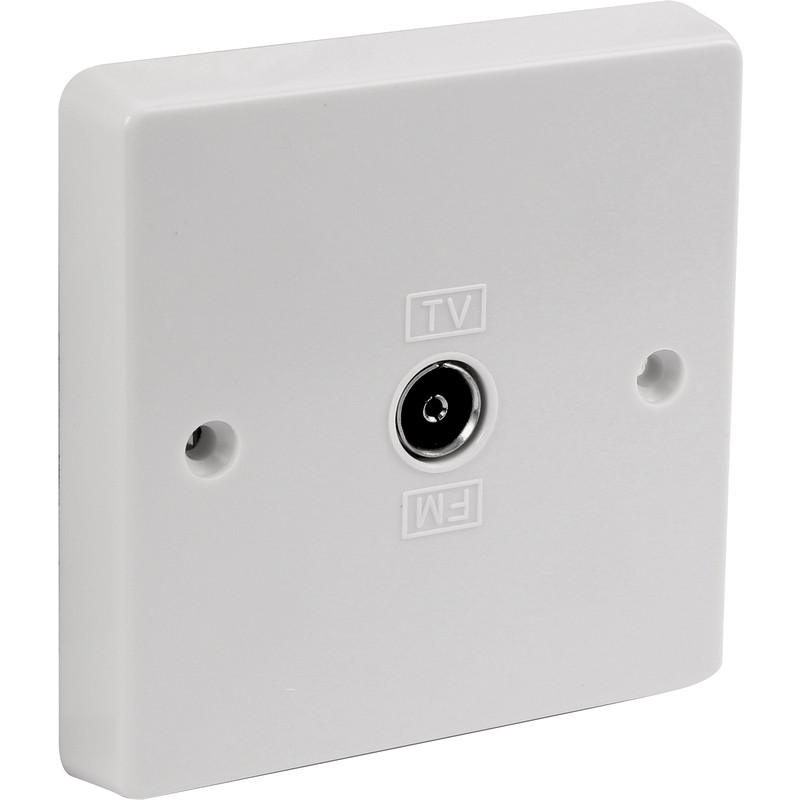
Satellite Sockets
Satellite sockets, also known as TV sockets, connect to satellite or TV cables to provide a signal to a TV using a coaxial cable. They’re mostly used in domestic settings to connect up a TV, but can also be used in small businesses and larger commercial settings.
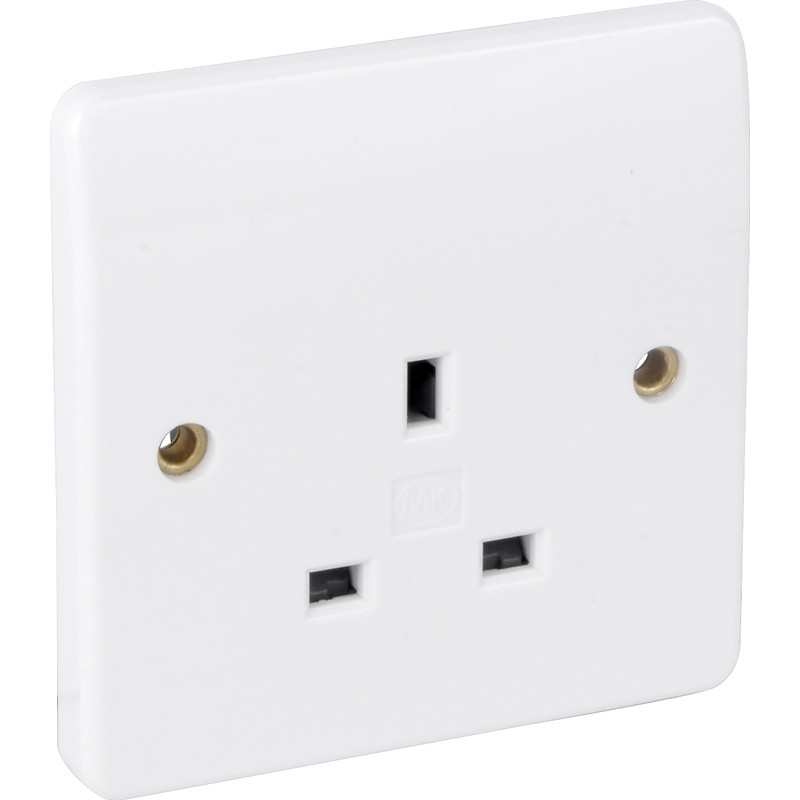
Unswitched Sockets
Unswitched sockets are less common in the UK. They are usually a single socket with no switch, so there is a constant power supply. In the UK, unswitched sockets are generally only used for appliances that need constant supply, such as fridges and freezers, and are isolated with a fused connection.
Key Plug Socket Features
Colour
The most common plug socket colour is white – it’s simple, complements a range of styles, and is often made from low-cost plastic so it costs less to install sockets. You’ll also find silver or chrome sockets, black, grey and anthracite for an ultra-modern look, or gold, antique brass and bronze sockets for a traditional, elegant alternative. At Toolstation, you’ll find bright colours to make a statement, including orange, blue and navy plug sockets.
Material
You’ll find the majority of plug sockets are made from plastic, which is low cost and durable. There are a wide variety of choices available, including for interior and exterior use. However, some modern sockets are made of stainless steel which are even more durable and do not scratch or get marked easily. Polycarbonate plug sockets are a popular alternative to plastic, and are often used for thin-profile, modern sockets.
Amp Rating
Electrical power is measured in amps, which is essentially the rate it flows through an electrical system. Plug sockets are given an amp rating which determines the electrical load they can carry. You should ensure that any appliance doesn’t exceed the amps of the socket they’re connected to. In the UK, the amp rating of most plug sockets is 13A because most household appliances have a power of 13 amps. You’ll also find sockets with an amp rating anywhere from 2A to 50A, although the majority are between 5A and 15A.
IP Rating
If you’re using a socket outside, you should consider the IP rating of the unit. An IP rating determines the level of protection a socket has against solids (such as dust and debris) and liquids (i.e. whether it is water resistant or waterproof). Weatherproof sockets are rated IP66, meaning they are water and dust tight and can be used outdoors, such as for powering lawnmowers and pressure washers. Find out more in our IP Ratings Guide.

